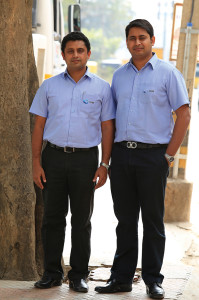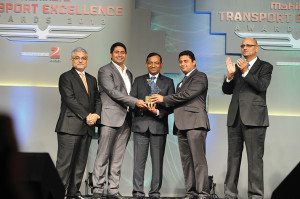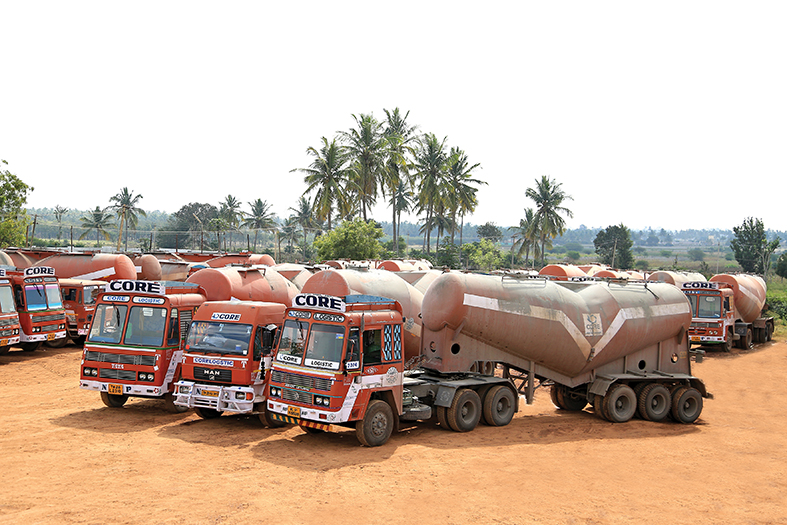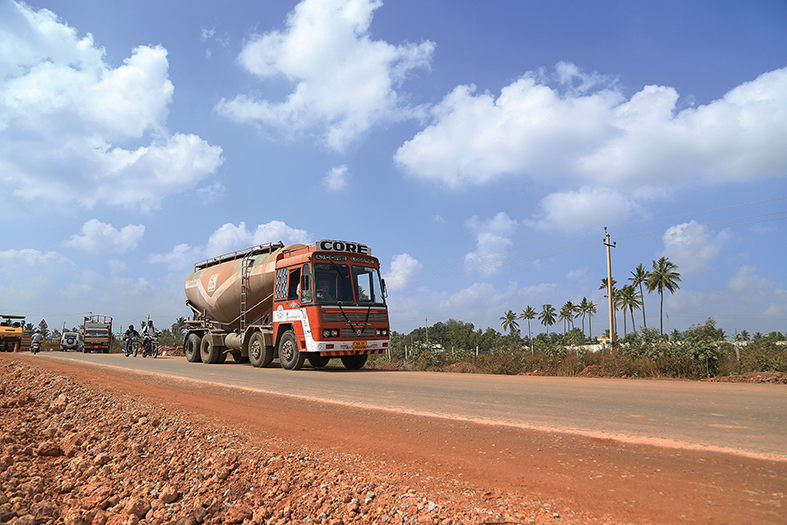Put together two young men in their mid-30s, a niche business sector waiting to be grabbed, and a legacy. And you get a successful young company creating ripples in the niche area of bulk transportation. Consulting Editor Sarada Vishnubhatla finds out talking to the Natarajan brothers of Core Logistic that this five-year-old company is already catering to a daunting list of clients and a nearly formidable threshold to its competitors.
The human body, a marvel of nature, is stabilized and balanced by core muscles. Without them, basic functions cannot happen. Arul Natarajan, Partner, Core Logistic, says: “Our logo represents the backbone and a peacock. We are like the backbone for all the companies we serve.”
Arul and his elder brother Rajesh Natarajan, the other partner of the company, act more like friends who complete each other’s sentences. Born on January 30 and 31 in 1978 and 1980 respectively, this dynamic duo started Core Logistic from the scratch in 2010 and quickly carved a niche for themselves by making bulk transportation as their core business. Headquartered in Bangalore under Rajesh, and the Tamil Nadu operations under Arul, Core Logistic posted a turnover of Rs. 16 lakhs in the first year compared to Rs. 95 crores five years later.

With necessary degrees from Leeds and Cardiff Universities in the UK respectively, both Rajesh and Arul have had hands-on training from their childhood as the grandsons of the late Mottaiah Gounder, the founding father of the famous Namakkal South India Transporters (NSIT).
The profound logic quite sums up the brothers’ vision. In 2010, the duo decided to bulk transport cement, dry fly ash and ground granulated blast furnace slag (GGBS). This despite knowing that the market has not yet matured to buy cement, dry fly ash and GGBS in such humungous bulk.
Only in the last decade has the concept of buying bulk cement emerged, and even then the volume in bulk stands at a mere 22 per cent. The balance is still the bag. Explains Rajesh who takes care of the logistics: “It is the other way round in other countries where bulk purchase is up to 80 per cent while for bags it is 20 per cent, because for manual mixing you do not get labour. Bulk will really start catching up though it will take some time.”
Loyal ‘Leylanders’
Core Logistic which began with 130 trucks today has 350. Rajesh outlines the operations: “In total we handle around 60-65,000 tonnes, 70 per cent of which goes to Karnataka and the rest to Tamil Nadu and Kerala. We do not go beyond the South.”
Arul, who controls the finances of the company, adds, “this business itself is not market based but volume based and related to customers, and these are specialized vehicles meant only for cement, dry fly ash or GGBS.”
Rajesh continues: “It is because of our fleet strength that we are able to give volume. Lafarge has six plants in Bengaluru. I supply for all the plants. For example, we know that three vehicles are halted here and if someone is ordering for more, we can divert these vehicles there and bring the fresh load here. For that, I need to get 1,000-1,200 tonnes from Cuddappah. So it has to be planned. It is a daily process.”
Of the 350 trucks, 200 are 49 tonners and Leyland outnumbers the other auto brands. Rajesh says: “We started off with 35 tonners. But bigger vehicles save you cost, the number of drivers comes down and the capacity increases. We have tried MAN and Bharat Benz, but Leyland is like bread and butter for us since our grandfather’s days. They are more risk-free and give better mileage.”
Core Logistic’s formidable list of clients includes companies like Zuari, Bharti, Dalmia, Chettinadu and Lafarge, among others.
Timely delivery

Their continued worth comes from their just-in-time delivery to clients. Rajesh feels: “If a ready mix plant’s maximum capacity is only 100 tonnes and today if they get a job they will easily exhaust it all in a day. So you need to be really geared up. In a day they might even require 500 tonnes and I need to support that. So how you do it and how you supply to the customer is very important.”
Rajesh and Arul know where their competition is. “Ammai Appar Roadways in Chennai has 420 trucks, but capacity wise we both are the same,” confides Rajesh. Given the fact that logistics is yet to be recognized as an organized sector in India, they get to compete only in small pockets.
Core Logistic has rented out two acres in Yerraguntla, Andhra Pradesh, to build toilets and rest rooms that can accommodate 25 drivers. This not only gives them the much-needed rest but also avoids the regular en route problems like diesel theft and mugging.
Says Rajesh: “They may go away but come back to us. Our retention rate is almost 50 per cent. We offer incentives to our drivers. If he takes 10 trips and is ready to go beyond then we pay him salary for one extra trip. We give annual awards to those drivers who maintain their vehicles well.”
The brothers know that technology does not sit well with the drivers. Rajesh shares, “The drivers are notorious. About 125 trucks are fitted with GPRS, but they cut the wire or remove the battery wire. We tell them that GPRS is not to monitor them but to manage time better. Slowly the drivers are habituated and we do surprise checks en route to see if GPRS is tampered with.”
Core Logistic holds regular driver training sessions at Cuddappah to educate them to keep them safe and motivated.
Looking ahead
By being professional, the brothers wish to change the perception of the business in the market. Rajesh elaborates: “If you want to grow, you need systems. We want to make this industry look attractive to people to come and work. Otherwise, they feel logistics is a clerk’s job.”
Arul shares with pride: “Rajesh was awarded the Youth Transport Personality in South India at the Mahindra Transport Excellence Awards 2013.”
There were other awards too for the brothers like Best Transporter from Chettinad Cements and Bharati Cements.
Complementing each other’s strengths and weaknesses, Rajesh and Arul Natarajan have become as indispensable as the core muscles to their clients.
|
“It is our pride to take it forward!” Q: Where do you see Core Logistic in the next five years? Rajesh: To achieve upto 95 per cent efficiency from the current 80 per cent. It is our pride to take it forward. Q: Any new concepts coming in? Rajesh: Silos. They are lifted on to the trucks and you put them at the site. It is still in preliminary stages. It will take another year or so. More than us the cement companies have to think about this. I can give them the transport. There will have to be a mechanism to measure. The customer has to be confident. |

